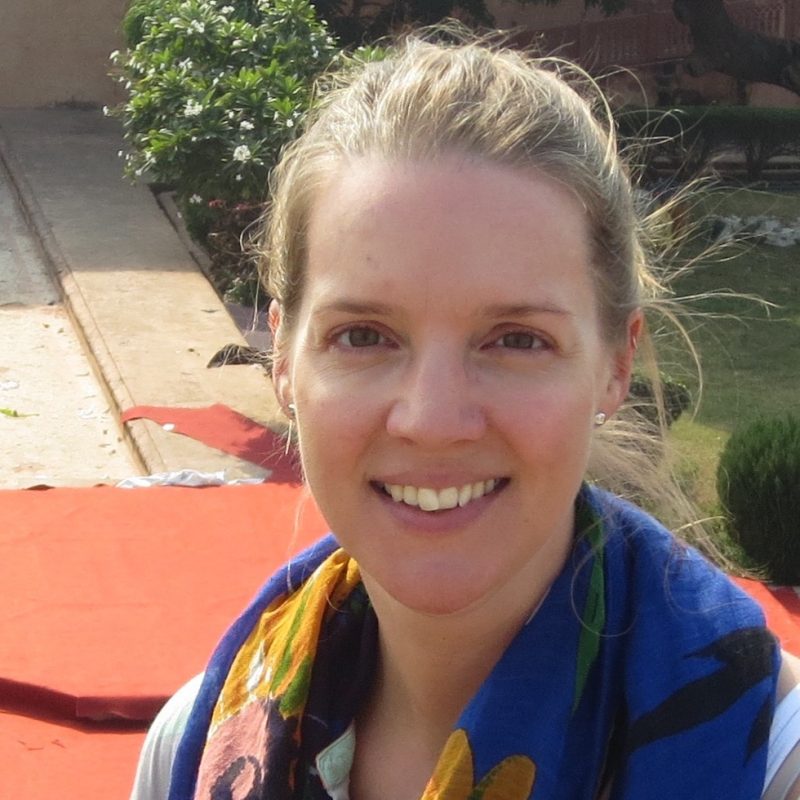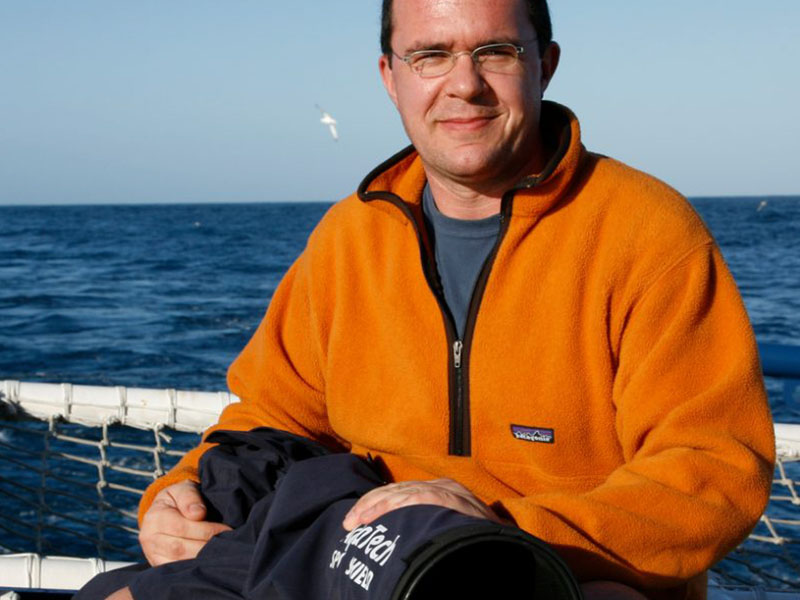The Congo Basin provides food, fresh water and shelter to millions of people. A mosaic of rivers, forests, savannas, swamps and flooded forests, the forests of the Congo Basin are teeming with life.
Gorillas, forest elephants, forest buffaloes and hippos all live in this region. It has been inhabited by humans for thousands of years.
Approximately 30 million people, representing more than 150 indigenous groups, live in the Congo Basin. Nearly 250 distinct ethnic groups exist; their lives and well-being linked intimately with the forest. The majority depend on forest resources for food, shelter, medicine and sustenance.
Greenpeace Africa and partner organizations have been defending the Congo Basin forest because of what it means to Africa and the Indigenous communities it houses and feeds, including its vital significance to the entire planet. But the Congo Basin has not been given the due attention and protection it deserves. To change that, we’re bringing the Greenpeace ship Esperanza to the Congo Basin.
Over the next several weeks, we will travel through Cameroon, the Democratic Republic of Congo and the Republic of Congo and we’re excited to invite you along with us.

Thembi Buthelezi
My name is Thembi Buthelezi and I’m from South Africa, based full-time in Johannesburg.
In October I’ll be embarking on a fun but very important journey to preserve the Congo Basin forest. This is sure to be a kaleidoscope of activity and colour.
I hope you’ll enjoy being a part of exploring the world’s second-largest rainforest with us.

Charlotte Fletcher
Hi from cold and windy Amsterdam! My name is Charlotte, I am from the UK, I live in Amsterdam and I work for Greenpeace USA.
Yes, I’m also confused.
Greenpeace’s work to protect the world’s forests has been close to my heart ever since I joined Greenpeace and now I have the privilege of setting off on an adventure to the Congo.
We will be seeing firsthand how your support and the support of others have enabled such progress in our work to protect the Congo Basin forests.

What Are Peatlands?
Peatlands are areas with partially decayed plant material in the soil that have existed in ancient forest landscapes for a very long time. Peatlands lock away vast amounts of carbon and play an important role in our fight to prevent the worst impacts of climate change.
Earlier this year, scientists discovered that the Congo Basin contains the most extensive peatland complex in the world. And so, Greenpeace is bringing scientists and journalists on board the Esperanza for an expedition to find out just how far these important areas stretch and how we can continue to preserve it.

Meet The Esperanza
Launched in February 2002, the Esperanza is the largest vessel in the Greenpeace fleet. And Esperanza – Spanish for “hope” – is the first Greenpeace ship to be named by our supporters.
The ship was the fourth of 14 fire-fighting vessels ordered by the Russian government between 1983 and 1987. Lack of funds saw the ship laid up for some years in the late 80s, then sold a couple of times, finally working in Norway as a supply vessel before being purchased and refit by Greenpeace.
At 72 meters in length and a top speed of 16 knots, the ship is ideal for fast and long range work.

We are Greenpeace.
From Your Faithful Editor: The number of creative, talented people who come together to bring the stories of all Greenpeace is doing around the world is simply amazing. It seemed a good time to pause and introduce you to the individual responsible for several of the photos of the Congo that have already appeared on this page, photographer Daniel Beltrá.

Daniel is an award-winning Spanish-born photographer whose work has appeared in The New York Times, The New Yorker, El Pais and many, many others. Over the last two decades he has worked on all seven continents, including Africa, where he captured some of the beautiful images you’ll see throughout this story.

#DanceForTheCongo
And, Another From Your Faithful Editor: I can’t tell you the number of times that someone has said to me, “I would love to help Greenpeace do something but I don’t climb buildings and I don’t really sail on ships.” Well, do you dance?
Greenpeace Africa is inviting people all over the world to show their love and support for the Congo Basin Forest by sharing their own “Dance for the Congo” videos and images. So, grab some friends, shake it for the Congo and share your moves on social media with the hashtag #danceforthecongo.
I mean, you might as well record it because you will definitely be dancing to this exclusive song commissioned by Greenpeace Africa with artists Daphne, Fally Ipupa and Fabregas. Heck, I’m dancing as I write this.
The Esperanza Arrives!
After sailing from Douala, in Cameroon, the Esperanza arrived in Matadi, Democratic Republic of the Congo, to a huge welcoming celebration!
Dancers and drummers and local organizations welcomed the Esperanza crew and Greenpeace Africa volunteers at the farthest point up the Congo River that can be reached by ocean-going ships.

Below, Vice Governor of the Province Atou Matubuana, Captain Mike Fincken and Provincial Minister Florian Massaki pose at a welcome ceremony for the Greenpeace ship Esperanza in the port of Matadi.

Oct. 30, 2017
This is Charlotte and Thembi saying, “Hello, Sawubona and Bonjour.”
Today, Thembi taught me that Sawubona means “hello” in her native language of Zulu.
Apparently, Zulu is one of 11 native languages in South Africa where she is from. And I’ve thrown in a “Bonjour” for good measure because French is the first language of the Democratic Republic of Congo (DRC), where we arrived today.
This is where our adventure into the Congo Basin truly begins!
As we flew in to Kinshasa, the capital city of the DRC, this morning we flew over parts of the mighty Congo River. It’s on this same stunning river that the Esperanza will be sailing later this week and it really gave us a taste of the dramatic and beautiful scenery we will be lucky enough to view on this trip.
At Kinshasa airport we met up with our guest on this trip, Helga Rainer, from the Arcus Foundation, one of our partners in protecting the Congo Basin forests. The Arcus Foundation have been supporting Greenpeace’s global forest protection work since 2007 and Helga is one of the foundation’s experts on great ape preservation.

In fact, she was telling us that she spent time living in the DRC whilst completing her PHD studies. So she knows this country well, and Thembi and I are grateful to be with her as this is the first time in the country for both of us and it can be a little overwhelming!
The Congo Basin forest is home to many species of rare and endangered great apes and the Arcus Foundation are committed to helping us to protect these natural habitats so the apes can survive the threat of mans exploitation of the Congo Basin’s natural resources.
Please follow our blog to hear more from Helga later in the week, on the work of the Arcus Foundation and her experiences on this trip.
Early tomorrow morning we will make the final leg of our journey which will take us to Matadi Port, where the Esperanza is docked for the week. There we will meet up with the rest of the Greenpeace Africa team to join a day of celebration and solidarity with the local communities who call the Congo forest their home. It is a day to bear witness to, and learn about, the strength of these communities to fight the destruction of their forest homes. Greenpeace does all we can to work alongside community leaders and local partner NGOs to make sure indigenous populations in the Congo can protect their homes and develop livelihoods in sustainable ways.
We are all excited to see what tomorrow has in store for us and to be with the incredible Greenpeace Africa forest campaign team to show our support for their work.
But right now we are rehearsing our Dance for the Congo so that we can post a video here later this week of our slick and expertly choreographed dance routine!!
We hope your all doing the same.
We can’t wait to see you Dance for the Congo!
Oct. 31, 2017
As we arrived at Matadi airport and were greeted by customs officers and a few friendly goats, we really started to feel our excitement building as we saw all around us the lush and forested landscape of central Africa.

But what really made our hearts soar was when we rounded a bend in the road from the airport and there below us, like a shining dot in the huge Congo river, was the beautiful sight of the Esperanza. We asked the driver to stop so we could take photos and remember this moment forever. What a sight she was, and how proud we felt to be part of the team that would be bringing the messages of Greenpeace to the Congo.
Yesterday, as part of the Community Solutions day on board the ship, we heard from the leader of one of the tribes living in the forest on how they had been fighting for many years against a logging company that was destroying their customary lands. The logging company had made many promises to help the tribe, to improve the education opportunities for their children and to develop better healthcare resources.
But none of the help they were promised had been delivered and he came to the Esperanza to tell their story and appeal for help in fighting back against the destruction of their forest home. It was a moving experience and hearing his story reminded me of other similar stories I had heard from forest communities in Indonesia who are in a similar situation and also feel that they have been forgotten and are powerless in the face of corporate greed.

But I know that this ship tour will play a huge role in drawing international attention to the situation of the African tribes and communities. We must give the Congo basin forest, and it’s people, a chance.
Charlotte x
Nov. 2, 2017
Traveling through the heavy humidity, dense topography and intense hot sun, while navigating through the estimated 400m deep majestic Congo River, a delegation of scientists, government officials, community leaders and Greenpeace Africa staff accompanied by national and international media have returned from an expedition in the village of Lokolama (45 km from Mbandaka – capital of the province of Equateur in the Democratic Republic of Congo).

Traveling to such remote places within the Congo forest is not without its challenges, due to the limitations posed by the roads and infrastructure. However the pristine pictures and images found there make it all worthwhile.
This adds to the peat already discovered in the Republic of Congo in January, making the Central Congo Basin peatlands the world’s most extensive tropical peatland complex.

This ship tour continues to show people the undeniable importance of preserving the forests, and really just how much beauty and significance it holds. Collaborating with local authorities and the knowledge of indigenous people on how best to protect this incredible forest comes out very strongly in most of the activities we’ve had, including the display of the wish tree for the Congo forest. Several leaves with hand written personal wishes hang delicately on a tree out on the deck for display.
Here’s to ensuring that the beautiful wishes for the Congo forest and all its inhabitants are realized and recognized.
